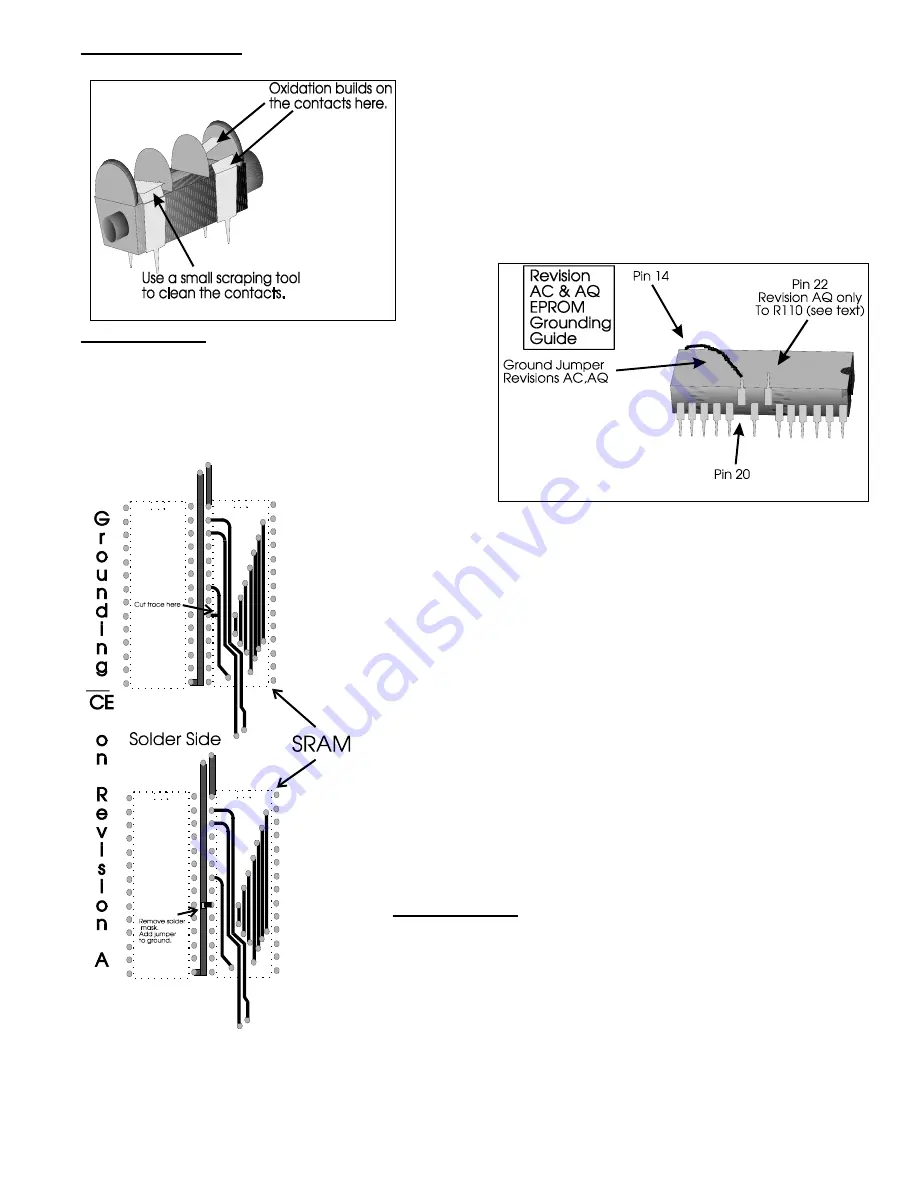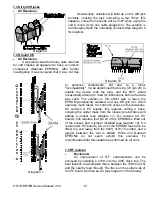
HR-16/HR16B Service Manual 1.00
10
7.3 Dirty Cliff jacks
•
All Revisions.
Occasionally, oxidation will build up on the cliff jack
contacts, causing the jack normaling to fail. When this
happens, some drum sounds will be "lost" when using the
unit in mono. (Only one cable plugged in). The solution is
to thoroughly clean the normaling contacts (See diagram 9
for location).
7.4 Ground CE
•
All Revisions.
It was discovered that many units returned
for odd crashes all appeared to have a common
component (National EPROMs). After further
investigation it was revealed that it was not due
to defective components, but due to a minor
"incompatibility". It was determined that using CE (pin 20) to
enable the device took too long, and the 8031 would
occasionally attempt to read it's instructions before the data
was valid. The solution to this effect was to leave the
EPROM permanently enabled, and use OE (pin 22), which
operates much faster, to control it's access to the data buss.
On revision A PC boards, this requires cutting a trace,
scraping the solder mask from the closest ground trace and
adding a jumper (see diagram 11). On revision CA PC
boards, this requires that pin 20 of the EPROM be lifted out
of the socket, and a jumper installed (see diagram 10). On
revision AQ PC boards, pin 22 of the EPROM must also be
lifted, the end (away from the 8031) of R110 is lifted, and a
jumper between the two is added. While non National
EPROMs do not seem exhibit this scenario, it's
recommended that this update be performed on all units.
7.5 RF resistor
•
Revision A.
An improvement of R.F. characteristics can be
achieved by installing a 470
Ω
into the ASIC clock line. The
best location to accomplish this is between the 74HC04 (U6)
and the nearby feed through. The trace on the solder side of
the PC board can then be cut (see diagram 12 for details).
Diagram 9
Diagram 10
Diagram 11


































